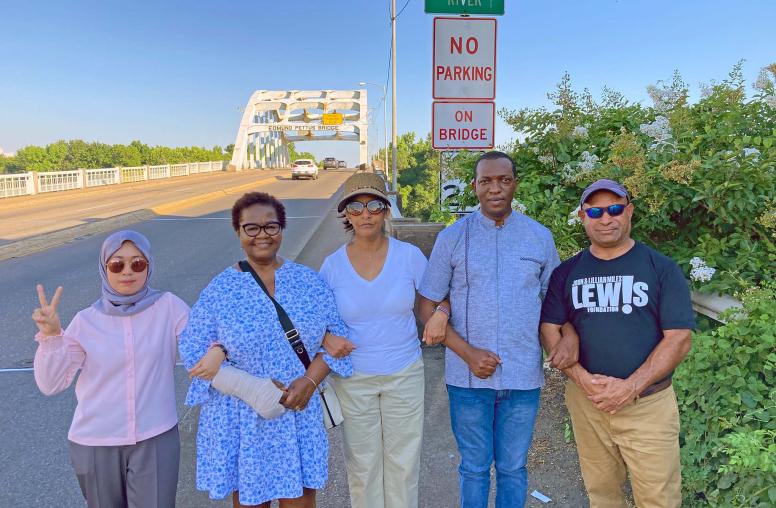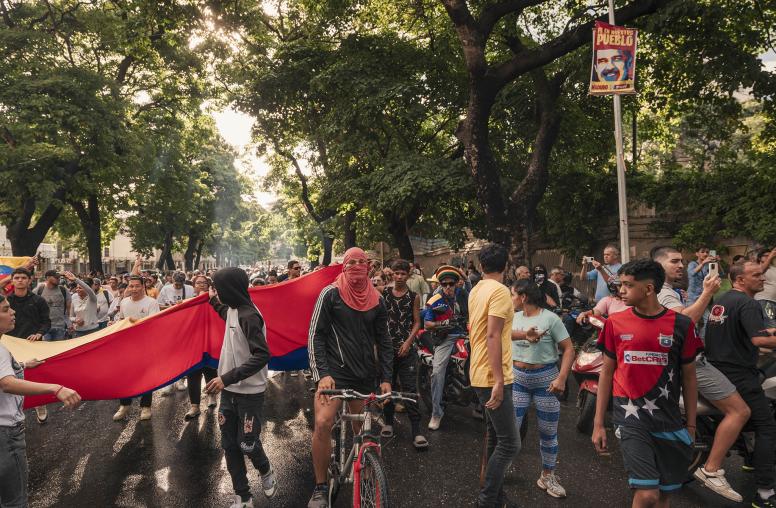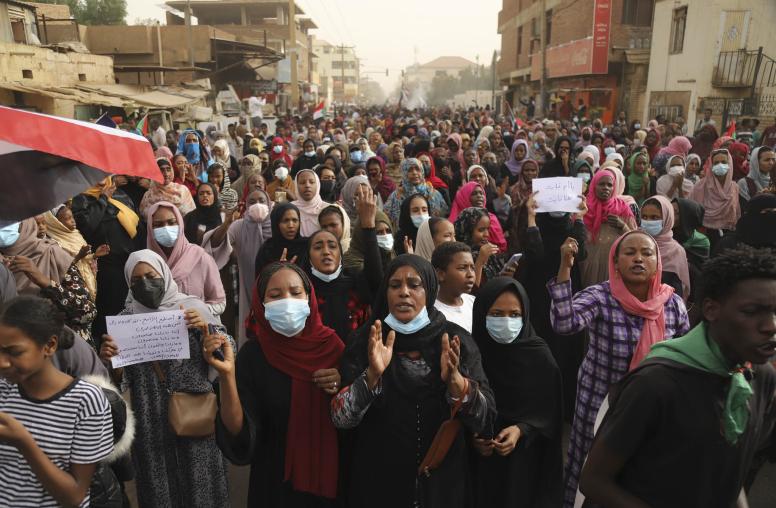To Defeat Terrorism, Use 'People Power'
Nonviolent Citizens’ Movements Are the Missing Piece of a Global Strategy Against Extremism
As governments and communities seek the right combination of methods to halt terrorism, one that we too often miss is nonviolent resistance. It’s not that we haven’t seen the power of protest movements that use mass marches, sit-ins, boycotts and other forceful but nonviolent tactics. To the contrary, people worldwide have been moved by watching such movements sweep aside the walls of apartheid, the tanks of dictators or the impunity of kleptocracies. But governments and civil society alike have failed to connect the dots—to promote nonviolent action that can help communities address grievances while absorbing the youth alienation upon which terrorist movements feed.

We understand the need to undercut extremist ideologies by strengthening the inclusiveness and justice of governance in conflict-afflicted societies. Thus governments and peacebuilding organizations fund and support programs to redress injustices and alienation. Such programs may focus on strengthening the rule of law under corrupt or weak governments; others build the social and political participation of youth and women. Or they may strengthen communities through local dialogue initiatives and other methods of conflict resolution.
Those efforts are essential. Yet a piece is missing. Typical strategies to counter violent extremism fail to confront what we know is a paramount appeal to youth of terrorist groups: the attraction of belonging to a community that seems to be on a moral mission to resist injustices. As one strategy study of recent years noted, ISIS’ powerful message for recruiting alienated youth is simply, “join us and help build an ideal society where you will always belong.”
Movements Offer Youth a Mission
Any complete strategy against terrorism must beat this extremist offer to youth of belonging and mission. In the marketplace of ideas and emotion, the product that can beat it is “people power.” It is no accident that, for decades, the faces we have seen in nonviolent, grassroots throngs—from South Africa’s anti-apartheid campaigns, to Tunisia’s Arab Spring, to East Germany’s toppling of the Berlin Wall—are so often youthful. Grassroots resistance movements offer alienated youth a powerful group within which to press a moral cause, feel the validation of social bonds, and concretely redress the ills that energized them through collective action.
A first reason that nonviolent resistance can displace terrorism is that it addresses the kinds of injustice on which extremist ideologies feed. In Nigeria, Boko Haram began in part as an anti-corruption movement—and grew in strength and brutality on the fuel of Nigerian army units’ indiscriminate attacks on civilians. In Iraq, ISIS was able to seize much of the Sunni Muslim heartland because it won support from Sunnis who felt marginalized and alienated by the central government. Both of those extremist groups, and many others, dramatize just such injustices in their recruitment campaigns and propaganda videos—and declare that only violent struggle can advance a righteous cause.
A second reason that nonviolent resistance can trump terrorism is that, as the hard data show, it is more effective than violence. More than a century’s worth of struggles worldwide have shown that peaceful resistance movements are twice as likely as armed struggles to achieve their objectives. And they are significantly more likely to produce rights-respecting and peaceful societies in the end. Campaigns of forceful but nonviolent action are especially valuable against tyrants: In recent decades, they toppled dictators such as Chile’s Augusto Pinochet, Serbia’s Slobodan Milosevic, and Liberia’s Charles Taylor.
Nonviolent Struggle Works Better
So to add this “missing piece” to our strategies against terrorism and extremism, a powerful step is simply to show aggrieved communities that nonviolent struggle works better. The stories and images of successful resistance against corruption and tyranny—from Gambia or Guatemala, Argentina or Afghanistan—can dilute the extremists’ allure. Fortunately, many of these campaigns are well-documented and just need to be popularized and adapted locally.
A third reason to promote nonviolent action is the healthier state in which it leaves societies and individual participants. Societies changed by nonviolent movements are more stable, and the improvements more lasting. For individuals, the emotional effects of camaraderie and solidarity at in sit-ins and marches can be powerful—in contrast to the psychological damage from killing people. In 2000, Serbian youth famously branded their anti-dictatorship movement, Otpor, with a clenched fist and made participation in their nonviolent activities cool, hip, and fun.
Even in the toughest cases, where extremists have achieved power, nonviolent resistance can weaken them. Under ISIS’ brutal rule in Iraq and Syria, protests led by women or respected religious figures led to tactical victories such as the protection of cultural sites and the release of political prisoners. Resisters used comedy and satire to counter ISIS and similar groups in videos that animate the absurdity of their extremism. Community-led, nonviolent, collective action has resisted predatory armed groups in places like Colombia, Syria, and the Philippines, protecting civilians in the process.
So how can this effective “missing piece” be deployed to dissolve the roots of terrorism? Like dialogue and facilitation, strategic nonviolent action and movement building are skills that are transferable across cultures and contexts. For the most part, this work is done at a modest scale by nonprofit, nongovernment organizations such as International Center for Nonviolent Conflict, Beautiful Rising, Rhize, and Nonviolence International. These organizations, along with the U.S. Institute of Peace, specialize in training, education, and the building of peer networks among activists and movements. Equipping aggrieved, oppressed peoples with the knowledge and know-how to organize in their communities and build powerful movements to advance rights and freedoms is a powerful antidote to violent extremism.
In the end, that “missing piece” to defeat terrorism is not missing after all. It’s in plain sight—but must be expanded if it is to fulfill its powerful potential.
This essay is also posted on Minds of the Movement, a blog of the International Center on Nonviolent Conflict.


